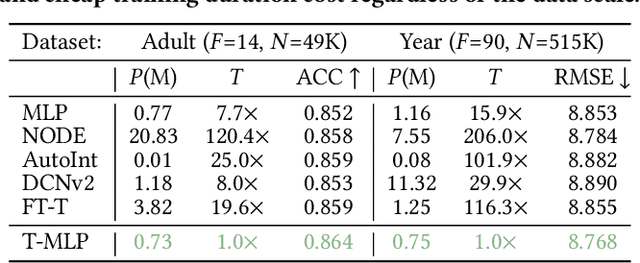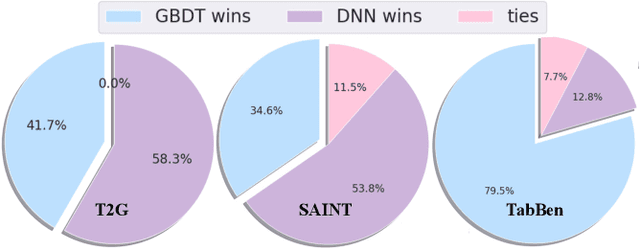Qianxing Wang
Team up GBDTs and DNNs: Advancing Efficient and Effective Tabular Prediction with Tree-hybrid MLPs
Jul 13, 2024



Abstract:Tabular datasets play a crucial role in various applications. Thus, developing efficient, effective, and widely compatible prediction algorithms for tabular data is important. Currently, two prominent model types, Gradient Boosted Decision Trees (GBDTs) and Deep Neural Networks (DNNs), have demonstrated performance advantages on distinct tabular prediction tasks. However, selecting an effective model for a specific tabular dataset is challenging, often demanding time-consuming hyperparameter tuning. To address this model selection dilemma, this paper proposes a new framework that amalgamates the advantages of both GBDTs and DNNs, resulting in a DNN algorithm that is as efficient as GBDTs and is competitively effective regardless of dataset preferences for GBDTs or DNNs. Our idea is rooted in an observation that deep learning (DL) offers a larger parameter space that can represent a well-performing GBDT model, yet the current back-propagation optimizer struggles to efficiently discover such optimal functionality. On the other hand, during GBDT development, hard tree pruning, entropy-driven feature gate, and model ensemble have proved to be more adaptable to tabular data. By combining these key components, we present a Tree-hybrid simple MLP (T-MLP). In our framework, a tensorized, rapidly trained GBDT feature gate, a DNN architecture pruning approach, as well as a vanilla back-propagation optimizer collaboratively train a randomly initialized MLP model. Comprehensive experiments show that T-MLP is competitive with extensively tuned DNNs and GBDTs in their dominating tabular benchmarks (88 datasets) respectively, all achieved with compact model storage and significantly reduced training duration.
 Add to Chrome
Add to Chrome Add to Firefox
Add to Firefox Add to Edge
Add to Edge